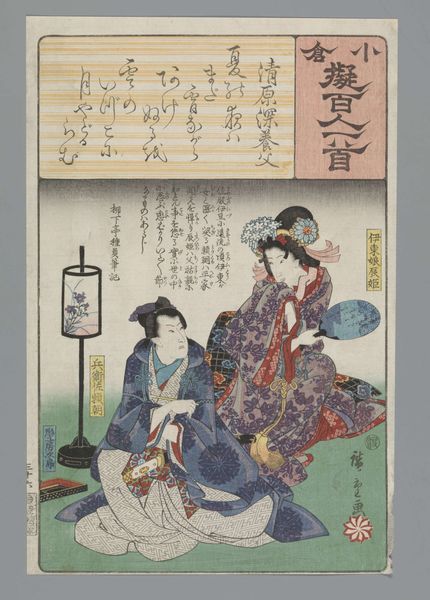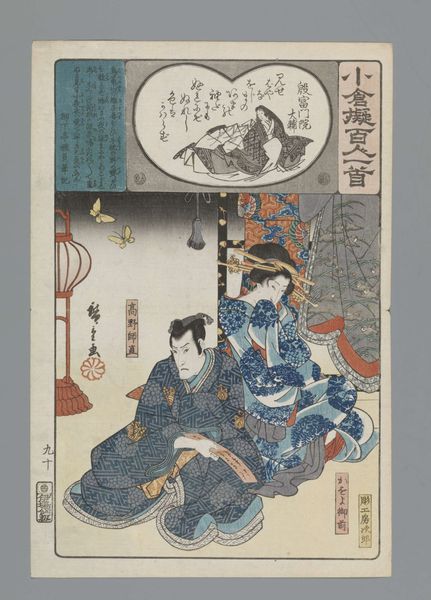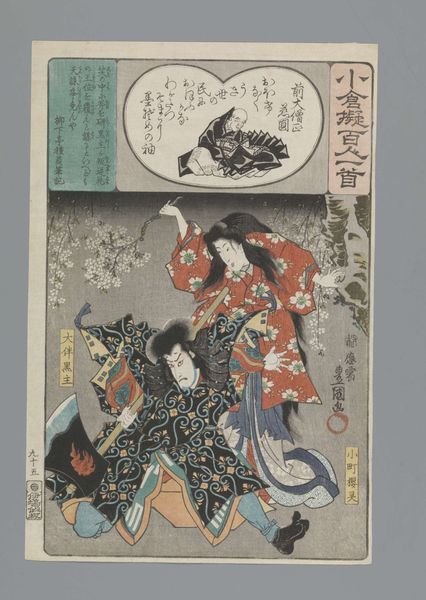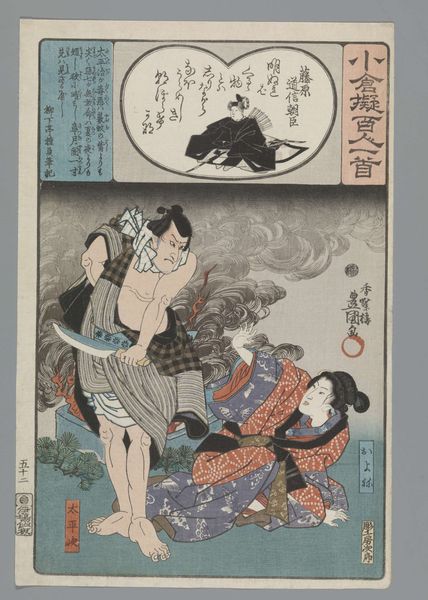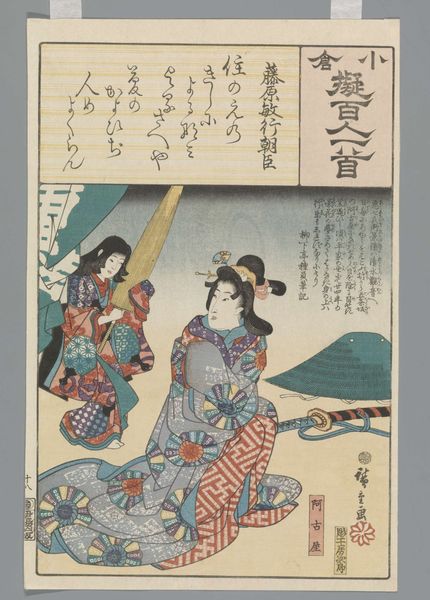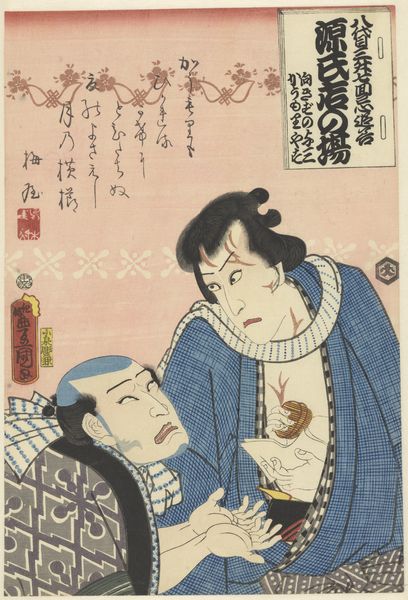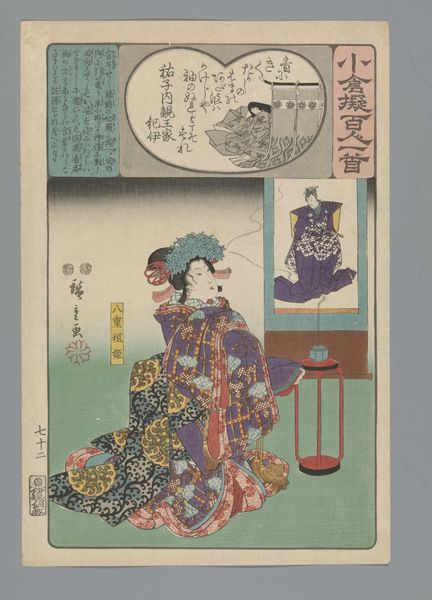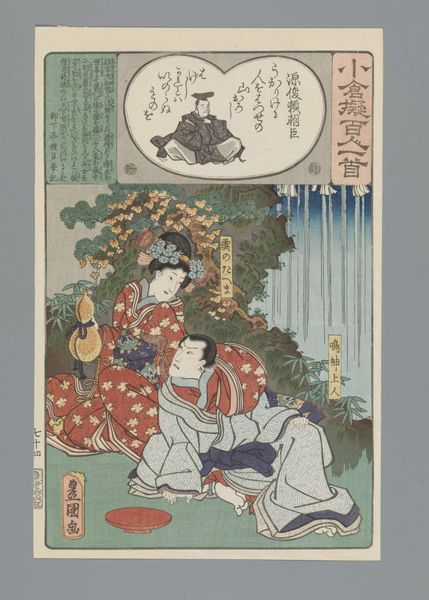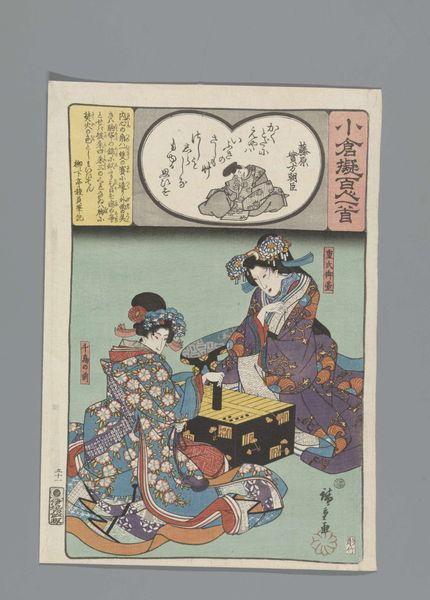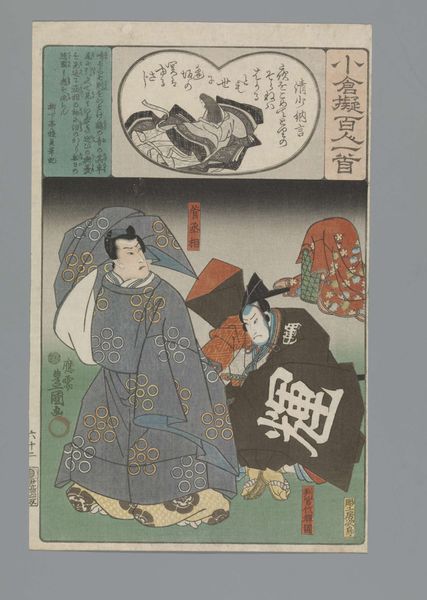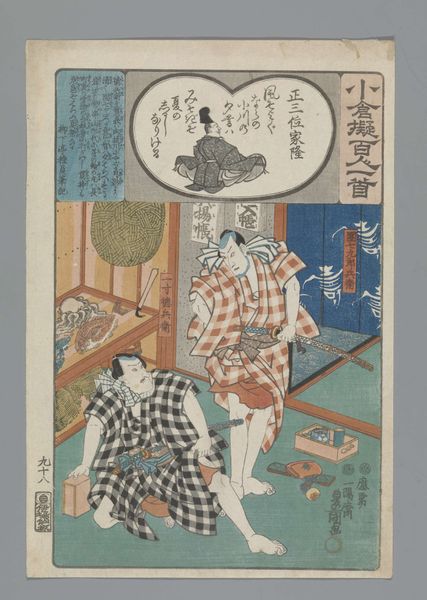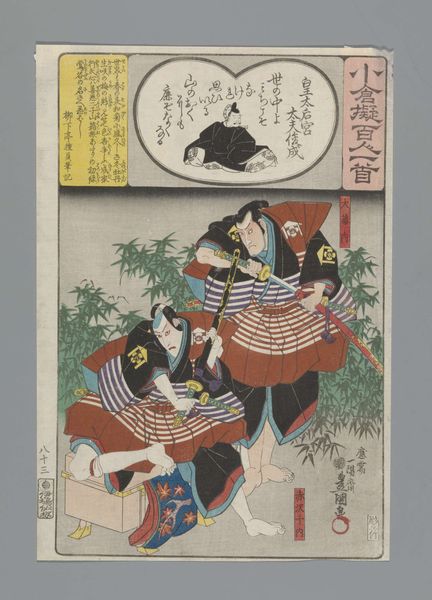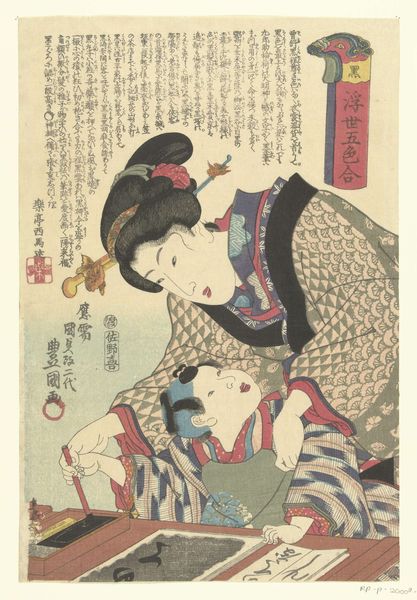
print, paper, ink, woodblock-print
#
portrait
#
narrative-art
# print
#
asian-art
#
traditional media
#
ukiyo-e
#
figuration
#
paper
#
ink
#
woodblock-print
#
watercolour illustration
Dimensions: height mm, width mm
Copyright: Rijks Museum: Open Domain
Editor: This woodblock print, titled "Ogura Imitation of the One Hundred Poems" by Utagawa Hiroshige, dates back to 1843-1846. I'm struck by the contrast between the active scene below and the quiet vignette above. What stylistic choices jump out at you? Curator: I am immediately drawn to the composition, particularly the interplay between line and form. Consider how the geometric patterns in the man’s robe create a dynamic visual texture, contrasting with the smooth, flowing lines of the woman’s kimono. This juxtaposition establishes a certain tension, doesn't it? And what of the subtle color palette? Editor: The colors do seem intentionally muted, mostly blues, creams and pale greens, with little spots of bolder colors... Do you think that influences how we see it? Curator: Absolutely. The limited color palette reinforces the print’s two-dimensional quality. Notice how Hiroshige uses color not for realism, but to define shapes and separate planes. The overall effect is one of flatness, which emphasizes the work's artifice and constructed nature, drawing attention to its formal properties, such as shape, line, and texture, not representation. How does this awareness of form affect your interpretation? Editor: That's a great point. Now that you mention it, the flatness forces me to really consider the shapes, which brings forward a modern sensibility to the whole piece. It really alters how I initially understood the image! Curator: Precisely! By analyzing the formal elements, we can uncover a deeper understanding of the artist's intention. It shifts our focus from mere representation to a deliberate arrangement of visual elements. Editor: I see. It's not just what's depicted, but how it's depicted. I'll definitely keep that in mind. Curator: Yes. Analyzing purely formal components can open exciting interpretative approaches.
Comments
No comments
Be the first to comment and join the conversation on the ultimate creative platform.
